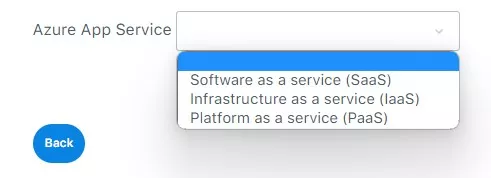Last updated on August 9, 2023
Here are 10 AZ-900 Microsoft Azure Fundamentals practice exam questions to help you gauge your readiness for the actual exam.
Question 1
A company is planning to deploy its suite of enterprise applications to Microsoft Azure, where each application has several dependencies and subcomponents. The company must also control and manage the patching activities of the underlying operating system of the servers.
What type of cloud deployment solution should you recommend?
- Infrastructure as a Service (laaS)
- Platform as a Service (PaaS)
- Software as a Service (SaaS)
- Functions as a service (FaaS)
Question 2
Note: This item is part of a series of questions with the exact same scenario but with a different proposed answer. Each one in the series has a unique solution that may, or may not, comply with the requirements specified in the scenario.
A company is migrating all its applications and data to Microsoft Azure. There is a strict requirement that the Azure environment must only be comprised of platform-as-a-service (PaaS) solutions to minimize the amount of administrative effort in managing the underlying resources.
Solution: Deploy the applications using the Azure App Service and migrate the data to Azure SQL databases.
Does this solution comply with the requirement?
- Yes
- No
Question 3
Azure App Service and Azure Virtual Machines are services that you can use in Azure. For each service, you have to determine its correct type of cloud service model.
Select the correct answer from the drop-down list of options. Each correct selection is worth one point.
Question 4
Which of the following are considered vertical scaling in a cloud environment?
- Increase the number of virtual machines
- Provision additional containers
- Increase the CPU and RAM of a virtual machine
- Provision an additional Azure dedicated host
Question 5
A company wants to migrate to the cloud. The requirement is to have a VPN connection to connect your on-premises network to an Azure virtual network over an IPsec/IKE (IKEv1 or IKEv2) VPN tunnel.
What is the most suitable type of VPN connection that you should use?
- Point-to-Site VPN connection
- Site-to-Site VPN Connection
- VNet peering connection
- ExpressRoute Connection
Question 6
INSTRUCTION: For each of the following items about subscription access policies, choose Yes if the statement is true and choose No if the statement is false. Take note that each correct item is worth one point.
Question 7
What service enables you to correlate trace events from multiple Azure VMs and other resources into a centralized repository?
- Azure Event Hubs
- Azure Repos
- Azure Monitor
- Azure Resource Manager
Question 8
Which service analyzes your resource configuration and usage telemetry and then recommends solutions that can help you improve the cost-effectiveness, performance, reliability, and security of your Azure resources?
- Compliance Manager
- Azure Information Protection
- Azure Resource Manager
- Azure Advisor
Question 9
Which service enables cloud architects and central information technology groups to define a repeatable set of Azure resources that implements and adheres to an organization’s standards, patterns, and requirements?
- Azure Blueprints
- Compliance Manager
- Azure Monitor
- Azure Advisor
Question 10
Note: This item is part of a series of questions with the exact same scenario but with a different proposed answer. Each one in the series has a unique solution that may, or may not, comply with the requirements specified in the scenario.
Your company is currently hosting a web application in an Azure virtual machine.
The application is processing mission-critical workloads.
They plan to reduce the costs by migrating it to a new instance.
Solution: Purchase a reserved instance.
Does the solution meet the goal?
- Yes
- No
For more practice questions like these and to further prepare you for the actual AZ-900 Microsoft Azure Fundamentals exam, we recommend that you take our top-notch AZ-900 Microsoft Azure Fundamentals Practice Exams, which simulate the real unique question types in the AZ-900 exam such as drag and drop, dropdown, and hotspot.
Also, check out our AZ-900 Microsoft Azure Fundamentals exam study guide here.




























